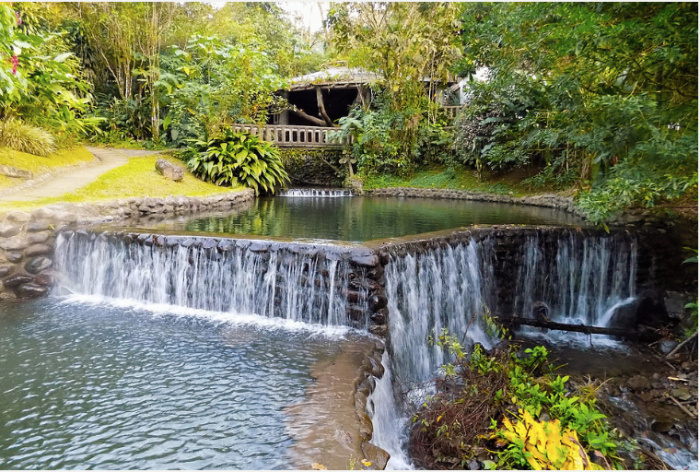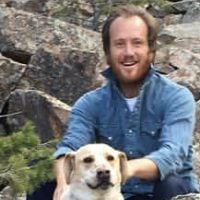Went on the best eco mindful tour of my life, yesterday, here in Costa Rica. Humankind actually can live in harmony with our environment—and have fun doing so—without effing up the whole planet.
Yoga. I’ve only done a few classes since my surfing injury, two years ago, but I’m mostly well again, and it’s a joy. The river roars behind Toby. I avoid using the PVC mats as much as possible, but the rest of the building is eco-built and the setting is stunning. I find my mind avoiding the stiffness of my practice, my thoughts racing about like an overheated rush brought back to the moment, reluctantly, by my breath and Toby’s instruction.
Breakfast. After talking with the staff and my colleagues, fellow visiting press, I work hard writing on my laptop and putting up 40 instagram stories on four accounts, rushed, but good to update the daily audience. I jog up and get to our story-telling workshop in the Library over the pools quite late.
A few intense exercises led by Toby—we’re instructed to stare into the eyes of a peer and listen to their story of pride and their story of shame. Rewriting our elevator pitch bios, we’re challenged to tell folks all our little life’s journey in a new, fresh way, absent buzzwords like “Boulder,” “Elephant,” “Buddhist,” “Journalism,” in my case.
Then, a tour with Rancho Margot’s founder, Juan.
One of the most exciting tours of my life—a place such as this built from start to experience to finish to be one wholesome cycle—touches on just about everything my life and Elephant Journal and Trungpa Rinpoche are dedicated to. Most hotels, say, or even meals at a nice restaurant, are all about the experience largely divorced from source and end. We don’t know if the food is poisoned, or how much plastic is wasted.
The full cycle of start, to experience, to finish here at Rancho Margot is both simple, natural, organic living as we were meant to live and…immensely difficult to achieve unless you’re inspired by mission: to be of benefit, to be truly eco-responsible. This is Dharma: slowing down, being present, celebrating, daring to be genuine—but also relearning to use local materials, reuse used materials into new materials, and working and playing for the benefit of all—visitors, students, staff, programs.
Everyone here can participate fully in and learn from what is happening with food and energy and yoga, meditation, nature, fighting the already coming tsunami of worldwide climate change through our daily lives. Rancho Margot.
So we tour from the dining room—the long wide thick tables all built by giant trees pushed down by the river when it was flooded. The huge long wide planks of hardwood journeyed only 100 yards to the dining room.
We talk about how the land was pasture, only 10 or so years ago, and now it’s a jungle. Nature can come back if we allow it, and help it along. But we do the opposite—viewing it as real estate, as money to be made by chopping it up and exploiting it, and one another. And in so doing we divorce ourselves from our own health, our own means to de-stress—which is connecting to the natural world that we are a part of.
Years ago, one of my first big interviews was with Deepak Chopra—he practically hollered at me when I referred to “the environment.” He said, it’s not “the environment, it’s not out there—it’s our environment!” Not in the sense of possession, but rather union. We belong to it as much as it belongs to us. The bell tolls for we.
We tour through the trees and flowers Juan and his staff have planted, or that grow here naturally. We tour past the frog pond (come back at sunset, he says, to hear them all singing the sun down, so I do so later in the day). We film and video and photo incessantly. The sun is hot, he’s sweating a stream down his wrinkled, enthusiastic face. Photos and videos of the day will be up on @waylonlewis, @elephantjournal, @ecofolks and @walkthetalkshow around the date these words were published.
We tour the relatively free-to-roam chickens, and the vast, rich gardens (eating leaves, yum, the freshest meal), and the pigs (who break my heart, though how they are raised to be killed in pens and fed good food is better than anywhere else in the world, it’s still awful if you allow yourself to feel it. So it’s best not to think about or feel it, America and much of the world says: continue to out-of-sight out-of-mind factory farm, it’s murder, but it’s a lifetime of torture first. As my longtime friend Joshua says only psychopaths kill what they love—what percentage of us claim to be animal lovers, but kill them and eat them?).
But as a vegan and an environmentalist and a Buddhist it’s still impressive to see how nothing stinks, here, no flies, the process is clean, the food they’re fed is local and fresh, they’re not eating bad food as the pigs and cows do in the US, where animals are forced to eat bad grain they aren’t built to digest, forced to grow too quickly, forced from their mothers and best friends, and eat themselves and eat drugs and foul up the land in stench and toxic waste).
So it’s raw and painful and heartbreaking here, but inspiring, too. Factory farming is our first enemy—I hope you can agree on that, reader. What’s happening here is the most responsible, free-est animal for meat production I’ve ever seen.
We tour the furniture-making area. It’s all made here, remarkable. We see the staff quarters, bunk beds and hanging laundry lines (they hang the guest washing, even the pillows, too, saving energy—everything here is powered by hydroelectric off of the roaring river and off of methane from smell-less poop and off of one bit of solar atop a mountain, for our weak WIFI.
But the wood fired ovens are smoking all day and those particulates are awful for humans and hang around for 9 months, even one fire will destroy the health of a neighborhood for 9 months. (This article ruined my enjoyment and love for making fires in my fireplace). We finally tour the lake, after the vast gardens and another lake he is making. All of this in the shadows of rich jungles overlaying mountains and the distant Arenal volacano, surrounded by a vast lake. All of this so they can eat and use what they grow and make.
Later. My first guava off a tree, courtesy Carlos, on a big but gentle hike to the top. A view from the top, guided by Carlos—so learned, so proud of his country, but still so frank about things. That’s rare, in humans everywhere I’ve ever been, but particularly in the US: a willingness to look at reality frankly, but still to be fundamentally optimistic. Most would prefer to ignore hard or sad or bad things, and rest in positivity—or self-righteously fight against hard or sad or bad things, making them worse.
Carlos has studied permaculture, but also knows everything because he grew up here, and paid attention, and is proud and delighted in his people and their relationship to nature. But his knowledge is not “merely” organic—he knows his stuff. He knows science, and how things work, and what they’re called, and their relationship to one another and to us.
He led our long but not-long hike to the top, and then I ran down with him at first and then alone, like a six-foot-three freckled billy goat, hopping joyfully, paying attention to every treacherous footfall so I wouldn’t break an ankle. That would put a crimp in the week’s adventures, and it’s exactly the kind of thing I’d do down here in Costa Rica: run down a mountain and turn an ankle.
So I’m extra mindful with every step, which just makes the long fast bounding journey down all the more fun.
I jog up to my little heavenly home, to my handmade simple living-roofed cabana, to shower, then change into swim trunks, and jogged half-naked over to the methane-heated pool, to swim with Ellie and Toby and Ravi. I left, feeling lonely in a good way, after pushing my still-recovering arms in the pool twice today, now—I left so I could shower and change again for our early dinner. I arrived at dinner, jogging there, and no one else was around.
Once again, Pizza (local ingredients, even the meat and cheese, I believe)—it looks delicious, but ain’t vegan, so it’s a window shopping experience. Much of the food here is not vegan—so for me it’s a diet of salad and tomatoes and bread and fruit, and good water (you can drink it here safely), and (of course, local) coffee.
I listen to an hour plus of Forest-Bathing lecture. Science behind it, reminded us that humankind divorced from nature is an unhealthy beast. That humankind in nature is a wholesome fun life. I leave and walk up and write this beneath my mosquito net.
Durga comes up and we go through her photos and videos, they’re pro compared to mine, she worked hard getting Juan’s tour and everything else, including the forest-bathing workshops.
We talk about her health and life, so good to reconnect after so many years. She leaves and I read The New Yorker—listen to the forest, it’s having a party of sounds, and go to bed. I wake at 5 am, well-rested, ready for a new precious day.









Read 6 comments and reply